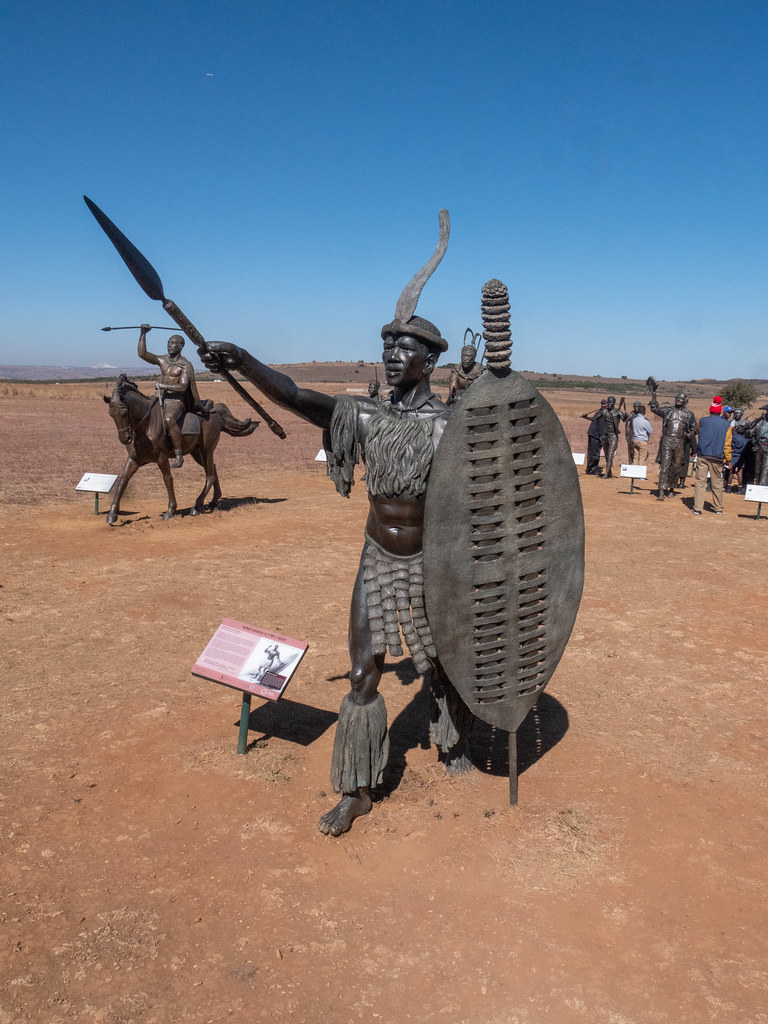Since King Shaka Zulu employed them in combat hundreds of years ago, traditional Zulu shields have been utilized by Zulu tribesmen.
The Zulu shield is currently utilized for traditional Zulu events like weddings and funerals rather than for use in war since the contemporary world and Zulu tribesmen have developed.
Despite the fact that the contemporary western world is encroaching on the African plains, traditional ceremonies still uphold the noble Zulu customs.
With a population of almost 9 million, the Zulu people are the biggest ethnic group in Southern Africa and come from KwaZulu Natal in South Africa.
Also Read: Shaka Zulu’ South Africa’s Greatest Army General
The Making of Zulu Shields
Zulu shields have traditionally been hand-made from cowhide, or more generally known in Zulu parlance as Nguni cattle, and have been an essential part of the ancient Zulu warfare.
Nguni cattle are indigenous to Southern Africa and are crucial to the Zulu people’s way of life. In Zulu culture, nguni cattle serve as a form of cash, and a man’s wealth is measured by the number of cows he owns.
When a young man wants to get married, he must first give the bride’s father an agreed-upon amount of cattle before he may ask for her hand in marriage.
Also Read: The Benin Empire
Types of Zulu shields
There are five distinct varieties of Zulu shields, and each one is utilized for a particular situation.
Isihlangu
the huge combat shield wielded by King Shaka Zulu, is item number 1. It measures roughly 5 feet tall (1.5m)
Umbumbuluzo
is a little combat shield that may be used to attack while being held in one hand.
Igqoka
is a little dance shield that is used during traditional ceremonies. Ihubelo is a small courting shield that is frequently dyed a scarlet tint.
Ihawu
Is a challenging rare shield to locate.
Also Read: History of the Asante Kingdom in Ghana
Cowhide
Even while you may find shields manufactured from different skins like zebra and kudu, these wouldn’t be regarded genuine Zulu shields because all Zulu shields are made of cowhide. We only use cowhide.
Who owns which Zulu shield will depend on the color patterns of the cowhide.
A Zulu chief or other high-ranking warrior would keep the unusually huge white color shield, while a regular Zulu warrior would use a more common color scheme like black and white.
Knowing who was in charge in a conflict would be much easier thanks to this.
Typically, the Zulu shield would be accompanied by 2 clubs and a middle shaft.
The Spear, also known as Assegai among the Zulus
The Ball Club, also called the Knob-Kerrie by the Zulu people
The Mgobo, a long, detachable shaft that runs down the middle of the shield, is another feature. This shaft would serve two functions.
Would slip beneath the Zulu shield and provide additional support, preventing the shield’s hide from bending.
The middle shaft would also be long enough for the Zulu warrior to lay his shield on the ground while keeping it vertical and holding it in front of him for protection, eliminating the need for him to support the whole weight of the Zulu shield with his arms alone. He would be able to conserve his strength and energy during combat.
The shield not only provided physical protection, but also signified metaphorical protection. Shields were thought to possess magical and therapeutic properties.
Shields were herb-sprinkle before combat (muti). This was done to strengthen the shield’s shielding ability and to defend the warrior from harm.
